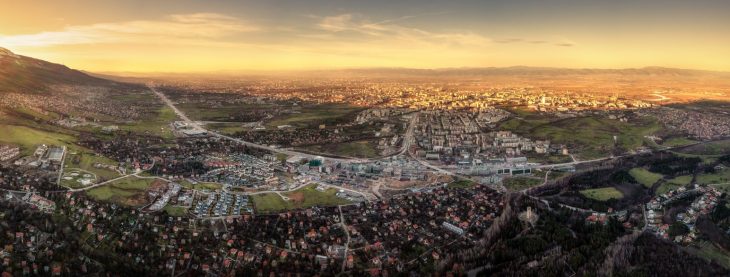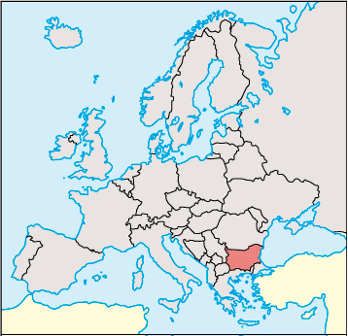What is the Capital of Bulgaria? Sofia

Capital City of Bulgaria: Sofia
City Overview
Sofia, the capital city of Bulgaria, is one of the oldest cities in Europe, with a history that stretches back over 2,000 years. Located in the western part of the country, Sofia is the political, cultural, and economic center of Bulgaria. The city is situated at the foot of the Vitosha Mountain, which provides a picturesque backdrop to its urban landscape. Sofia’s strategic location near the Balkan Peninsula has made it a key city throughout history, influencing trade routes, culture, and politics in the region.
Today, Sofia is a modern metropolis that blends ancient heritage with contemporary life. It is home to nearly 1.3 million people, making it the largest city in Bulgaria. The city’s rich history is reflected in its architecture, with structures ranging from Roman ruins to Soviet-era monuments, alongside modern glass buildings and bustling urban areas. Sofia’s dynamic atmosphere attracts both locals and tourists, offering a mix of cultural experiences, parks, historic landmarks, and thriving commercial centers.
City Facts: Sofia
- Area: 492 square kilometers (190 square miles)
- Population: Approximately 1.3 million (2023)
- Time Zone: Eastern European Time (EET, UTC +2), Eastern European Summer Time (EEST, UTC +3) during daylight saving time.
- Highest Mountain: Vitosha Mountain (2,290 meters / 7,513 feet) – Vitosha provides a natural green space within the city, popular for hiking and skiing.
- Longest River: The Iskar River – The Iskar River runs along the outskirts of Sofia, providing water and scenic views to the city.
Sofia is a vital hub for business and education in Bulgaria. It is home to several universities, international organizations, and industries, particularly in the fields of information technology, manufacturing, and services. The city’s infrastructure continues to develop, with expanding metro systems and public transportation. As the political capital, Sofia is the seat of the Bulgarian government, including the President’s office, the National Assembly, and numerous ministries.
Major Landmarks in Sofia
- Alexander Nevsky Cathedral: This stunning Orthodox cathedral, completed in 1912, is one of the largest in Europe and a symbol of Sofia’s spiritual heritage. Its golden domes, intricate frescoes, and large marble interior make it a prominent landmark in the city.
- Boyana Church: A UNESCO World Heritage site, Boyana Church is renowned for its well-preserved medieval frescoes, which date back to the 13th century. The church is located at the foot of Vitosha Mountain and is an important historical site for Bulgaria.
- Vitosha Boulevard: This pedestrian street is the main shopping and cultural artery of Sofia. Lined with high-end stores, cafes, and cultural venues, Vitosha Boulevard offers a lively atmosphere and beautiful views of Vitosha Mountain.
- National Palace of Culture (NDK): Opened in 1981, the National Palace of Culture is a major cultural venue hosting concerts, exhibitions, and conferences. The building’s unique Brutalist architecture stands as a testament to Bulgaria’s socialist-era architectural style.
- Sofia Synagogue: The Sofia Synagogue, built in 1909, is the largest synagogue in Southeastern Europe. It is an architectural gem and a central place of worship for the Jewish community in Bulgaria.
- The Largo: A group of three buildings in the center of Sofia, known for their Stalinist architecture, including the former headquarters of the Bulgarian Communist Party. The Largo is an iconic reminder of Sofia’s Soviet-influenced past.
- Vitosha Mountain: Just outside the city, Vitosha Mountain offers opportunities for skiing, hiking, and nature walks. Its proximity to Sofia makes it a popular retreat for both locals and tourists seeking a break from the urban hustle.
- Zaimov Park: A large green space in the center of Sofia, Zaimov Park is ideal for leisurely walks, picnics, and outdoor sports. It is one of the many parks in Sofia that contribute to the city’s high quality of life.
Climate Overview
Sofia experiences a continental climate, characterized by hot summers, cold winters, and moderate rainfall throughout the year. The city’s location in a valley between mountains leads to distinct seasonal variations in temperature and precipitation. Winters can be chilly, with temperatures often dipping below freezing, while summers are typically warm and sunny.
The surrounding mountains play a role in protecting the city from extreme weather, creating a relatively mild climate compared to other parts of Bulgaria.
Climate Table: Average Temperature, Precipitation, and Sunny Days
| Month | Average Temperature (°C) | Precipitation (mm) | Sunny Days |
|---|---|---|---|
| January | -2°C | 42 mm | 5 |
| February | 0°C | 39 mm | 6 |
| March | 5°C | 45 mm | 8 |
| April | 10°C | 40 mm | 12 |
| May | 15°C | 50 mm | 14 |
| June | 20°C | 60 mm | 15 |
| July | 23°C | 40 mm | 17 |
| August | 23°C | 30 mm | 18 |
| September | 18°C | 35 mm | 15 |
| October | 12°C | 40 mm | 11 |
| November | 5°C | 50 mm | 7 |
| December | -1°C | 45 mm | 5 |
Other Cities That Have Served as Capital in the History of Bulgaria
1. Plovdiv (Before 1878)
- Period of Capital: Before 1878 Plovdiv, one of the oldest cities in Europe, was briefly the capital of Bulgaria before Sofia was chosen as the official seat of government. It remains an important cultural and historical city, known for its Roman ruins and vibrant arts scene.
2. Veliko Tarnovo (Before 1393)
- Period of Capital: Before 1393 Veliko Tarnovo was the capital of the Second Bulgarian Empire. The city is famous for its medieval architecture, particularly the Tsarevets Fortress, which once housed the Bulgarian kings.
Country Facts: Bulgaria
- Population: Approximately 6.8 million (2023)
- Area: 110,994 square kilometers (42,855 square miles)
- Largest City: Sofia
- Currency: Bulgarian lev (BGN)
- Official Language: Bulgarian
- ISO Country Codes: BG (Alpha-2), BGR (Alpha-3)
- Government Type: Parliamentary Republic
- Capital City: Sofia
- Religion: Predominantly Eastern Orthodox Christianity, with small Muslim and Catholic communities.
Bulgaria is a country with a rich cultural and historical legacy. It is home to several UNESCO World Heritage sites, including the Rila Monastery and the ancient city of Nessebar. Sofia, as the capital, plays a crucial role in the country’s development, both politically and economically. The city’s blend of ancient history and modern infrastructure makes it a unique destination in Eastern Europe. From the impressive architecture of the Alexander Nevsky Cathedral to the natural beauty surrounding the city, Sofia offers both locals and tourists a wealth of experiences.
The country’s diverse landscapes, which include mountains, plains, and the Black Sea coastline, contribute to its appeal. Bulgaria’s thriving tourist industry, coupled with its growing economy and rich cultural traditions, ensures that Sofia remains a key center of influence in the Balkans.














































